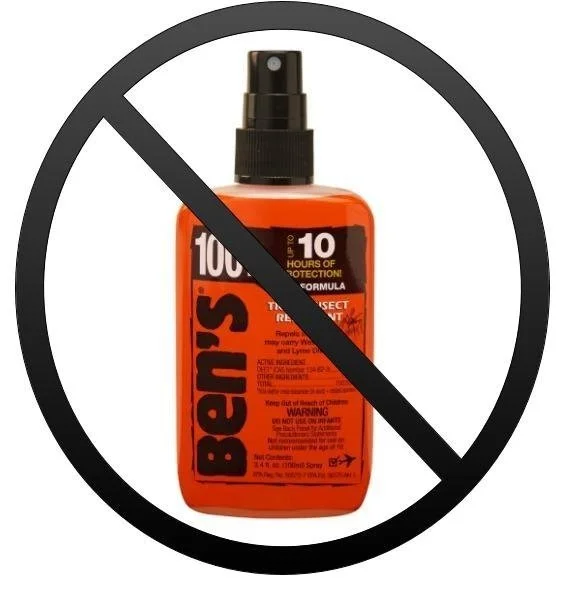The Ultimate Guide to Rock Climbing During New Hampshire’s Bug Season
Bug season in New Hampshire: two words that can strike fear into even the most stoked climber. Just as the snow melts and the rock starts calling, black flies, mosquitoes, and ticks emerge—and suddenly, your perfect send day becomes a battle with the air itself.
But here’s the good news: bug season doesn’t have to ruin your climbing plans.
With the right timing, crag selection, gear, and mindset, you can still enjoy high-quality granite, rack up pitches, and stay (mostly) bite-free. Whether you’re a local trying to squeeze in early-season climbs or visiting NH for the first time, this guide will help you climb smarter—not itchier.
When Is Bug Season in New Hampshire?
Bug season typically runs from late May through early July, peaking around mid-June. Severity varies by year—wet springs mean more bugs—but the usual culprits are:
“Remember Mothers day- Fathers day””
Black Flies: Peak late May to mid-June. Swarm in shady, moist areas.
Mosquitoes: Ramp up in mid-June and stay strong through early July.
Ticks: A year-round concern but most active from spring through fall, especially in wooded or grassy areas.
Climber Tip: Bugs behave differently depending on your location, elevation, and time of day. Don’t write off the season—strategic climbing makes a huge difference.
Best Times of Day to Climb
Timing can make or break your day:
Early mornings (before 9 AM): Cool temps = fewer bugs. Ideal for sending.
Late afternoons: Tolerable if there’s breeze or sun exposure.
Avoid dawn & dusk: Prime time for mosquito and fly swarms.
Choose sun-exposed cliffs: Bugs prefer shade, moisture, and still air.
Best Bug-Resistant Crags in NH
Certain cliffs naturally fend off bugs due to sun, wind, and elevation. Here are some top picks:
Climber up high on the Airation buttress, Cathedral Ledge
📍 Rumney (Jimmy Cliff & Crows Nest)
Higher elevation, sun-exposed faces.
Midweek mornings = ideal conditions.
Avoid swampy or shaded lower walls.
📍 Cathedral Ledge (North Conway)
Exposed granite with steady airflow.
Thin Air Face and Airation Buttress are good bets.
📍 Whitehorse Ledge
Open slabs get sun and breeze.
Long belays? Bring a net—bugs love stationary belayers.
📍 Square Ledge (Pinkham Notch)
Breezy, high elevation.
Cooler temps—pack a light puffy.
Pro Tip: Check local guide services or online forums for real-time bug updates. Conditions vary crag by crag.
Essential Gear for Bug Season Climbing
Here’s how to fight back without compromising safety:
Insect Repellent
Use Picaridin-based sprays: Effective and gear-safe.
Avoid DEET on gear: It degrades nylon and plastics—bad for ropes, harnesses, slings.
Permethrin-treated clothing: Great for ticks and black flies.
100% deet- Very bad for technical climbing gear!
Clothing & Accessories
Long-sleeve, lightweight shirts and pants: Cover up without overheating.
Bug head net: A lifesaver for belayers or shady belay stances.
Tick-repellent socks & gaiters: Ideal for bushy approaches.
Bonus Tools
Thermacell devices: Effective at campsites or base areas.
Sunscreen: Bugs aren’t your only enemy—protect skin on exposed faces.
Natural Strategies to Avoid Bugs
Let the environment work in your favor:
Climb windy, sunny cliffs: Bugs hate exposure and air movement.
Keep moving: Belayers get bit the most. Limit downtime.
Start high: Bugs are worse in low, wooded areas.
Avoid swampy or shaded approach trails during peak hours.
Pro Tips from Local Guides
We climb through bug season—so can you. Here’s what works:
Start early, finish before noon.
Always have a bug kit: repellent, net, sleeves, backup crag plan.
Don’t commit to a single spot—conditions change fast. Stay flexible.
If a crag is swarming, cut your losses and move on. You’ll thank yourself later.
Key Takeaways: How to Outsmart Bug Season
✅ Climb early, at high elevations or exposed cliffs
✅ Use Picaridin, long sleeves, and tick-resistant clothing
✅ Avoid DEET on gear—use Permethrin or Picaridin instead
✅ Keep moving, rest in the open, and stay mentally tough
✅ Check local forums or guides for up-to-date beta
Bug season doesn’t have to mean bad climbing. With the right tools, timing, and mindset, you can still crush routes while others are hiding indoors.
Want Real-Time Climbing Conditions?
Follow us on Instagram and Facebook
Get bug updates, trail updates, route recommendations, and seasonal climbing beta from locals who live and breathe the Granite State.


